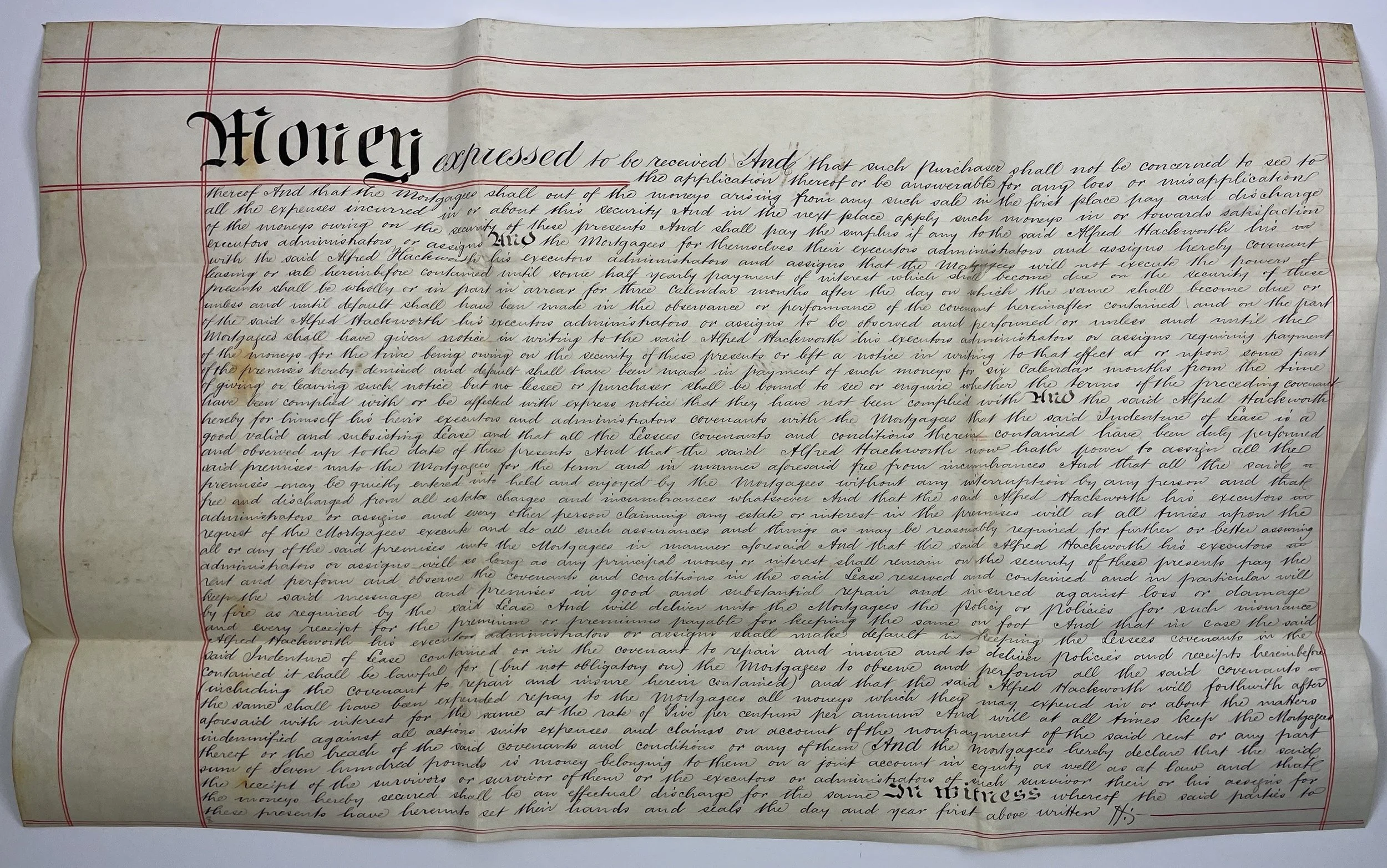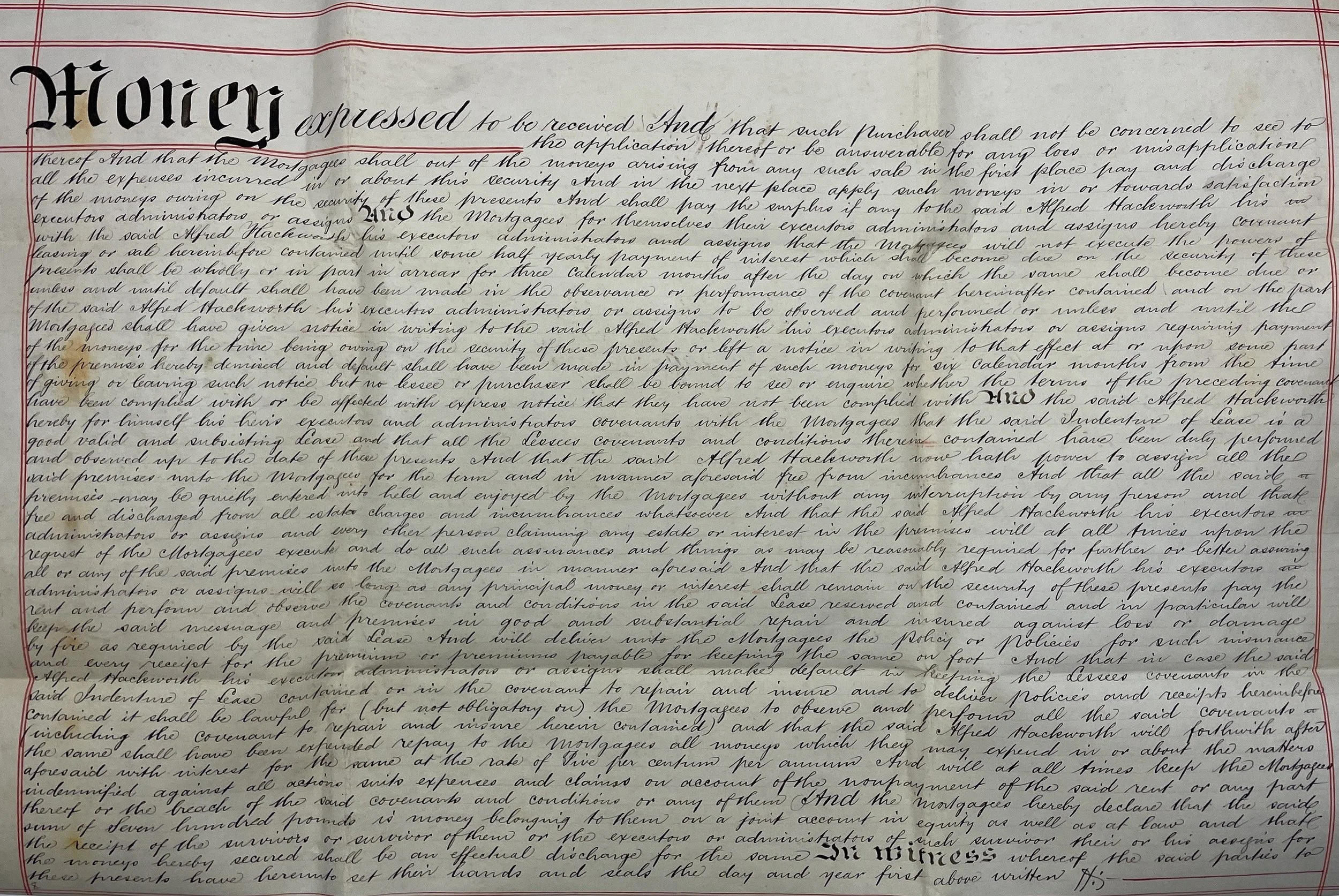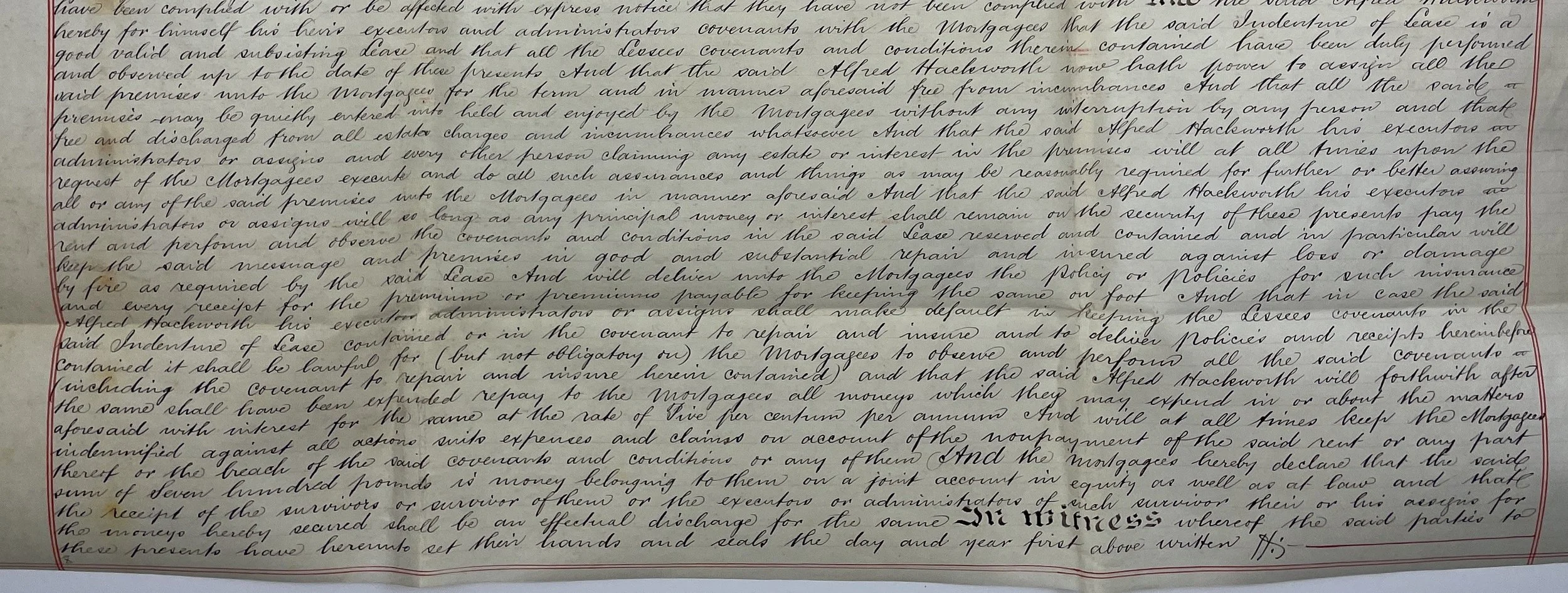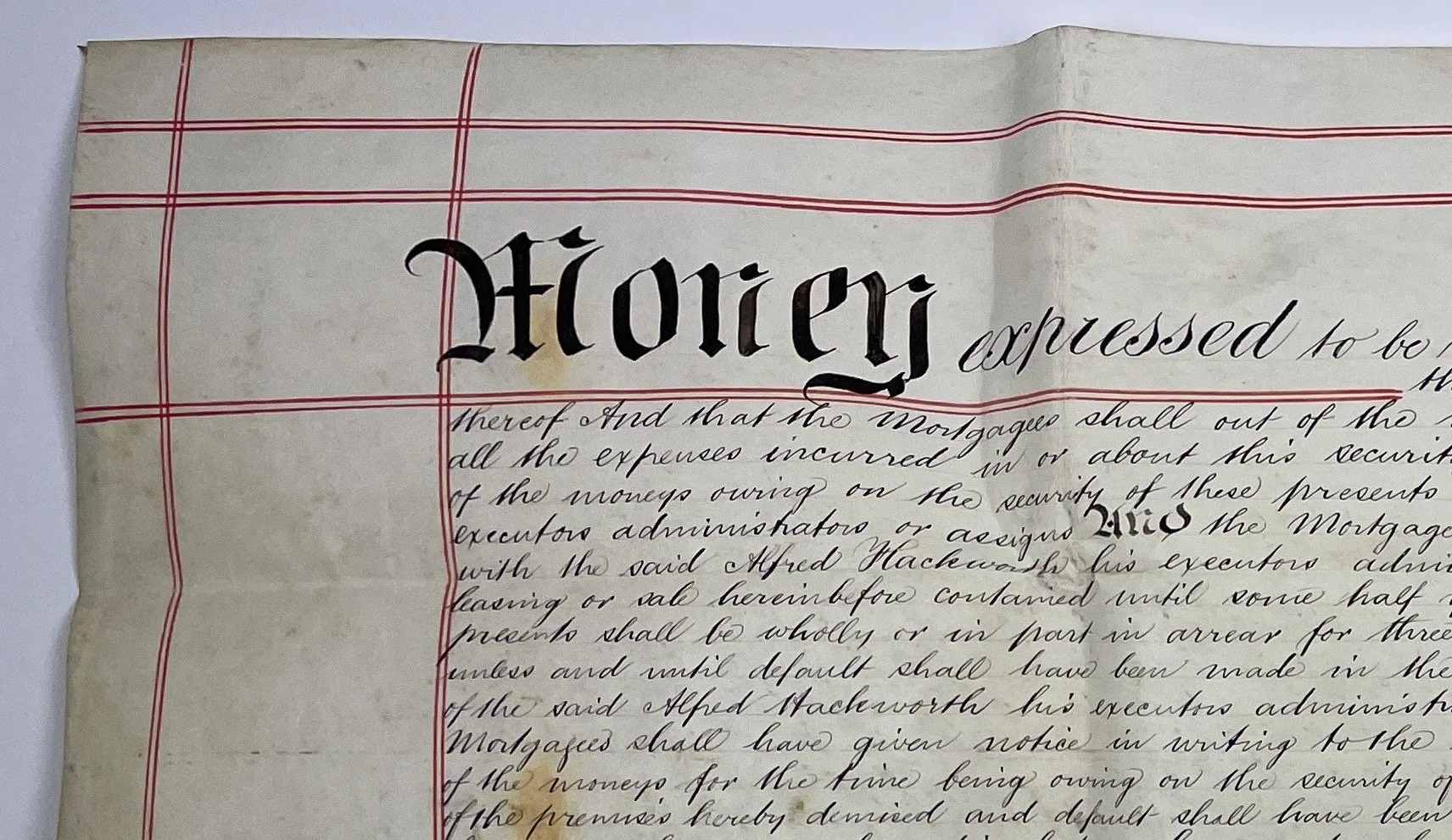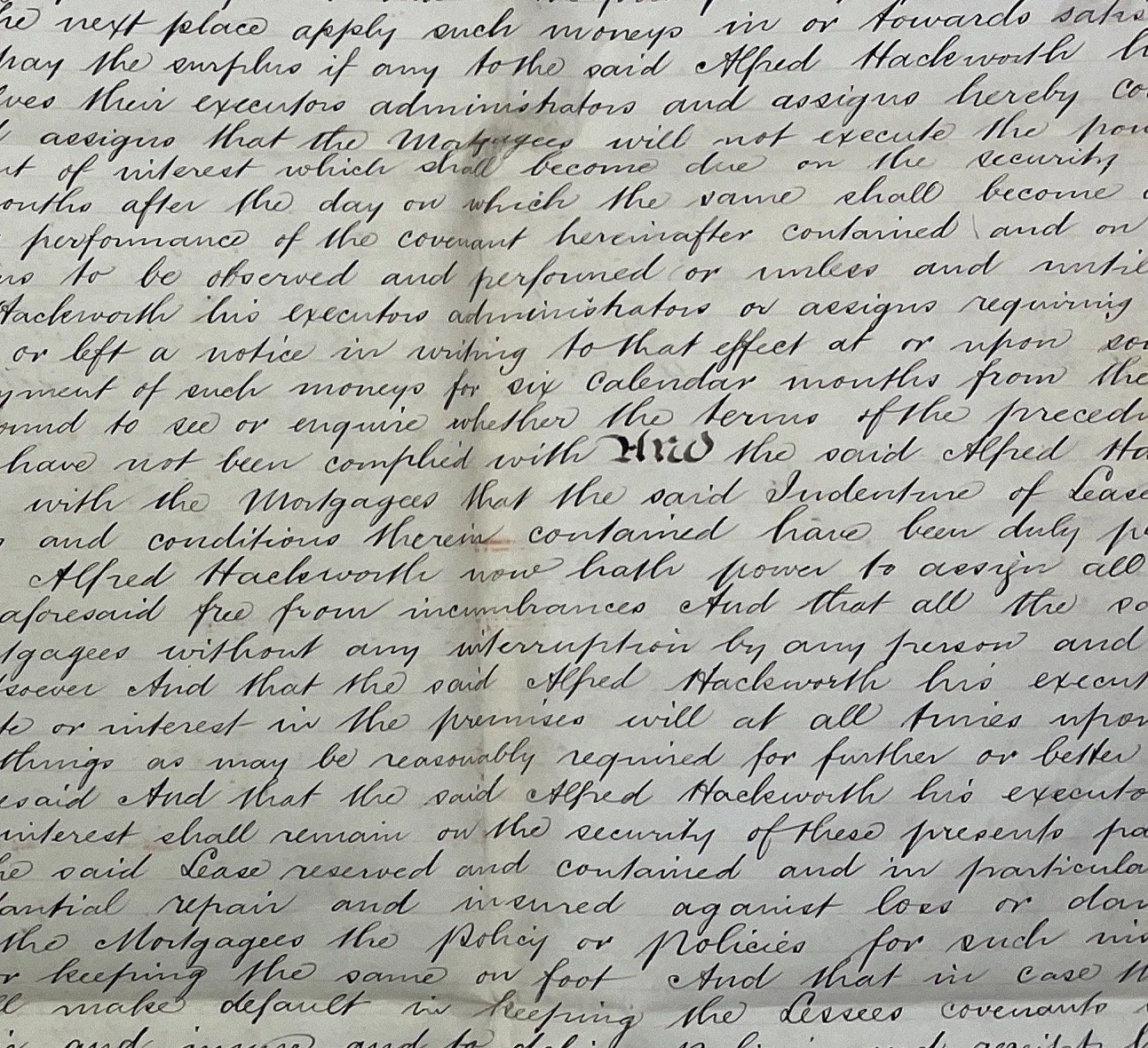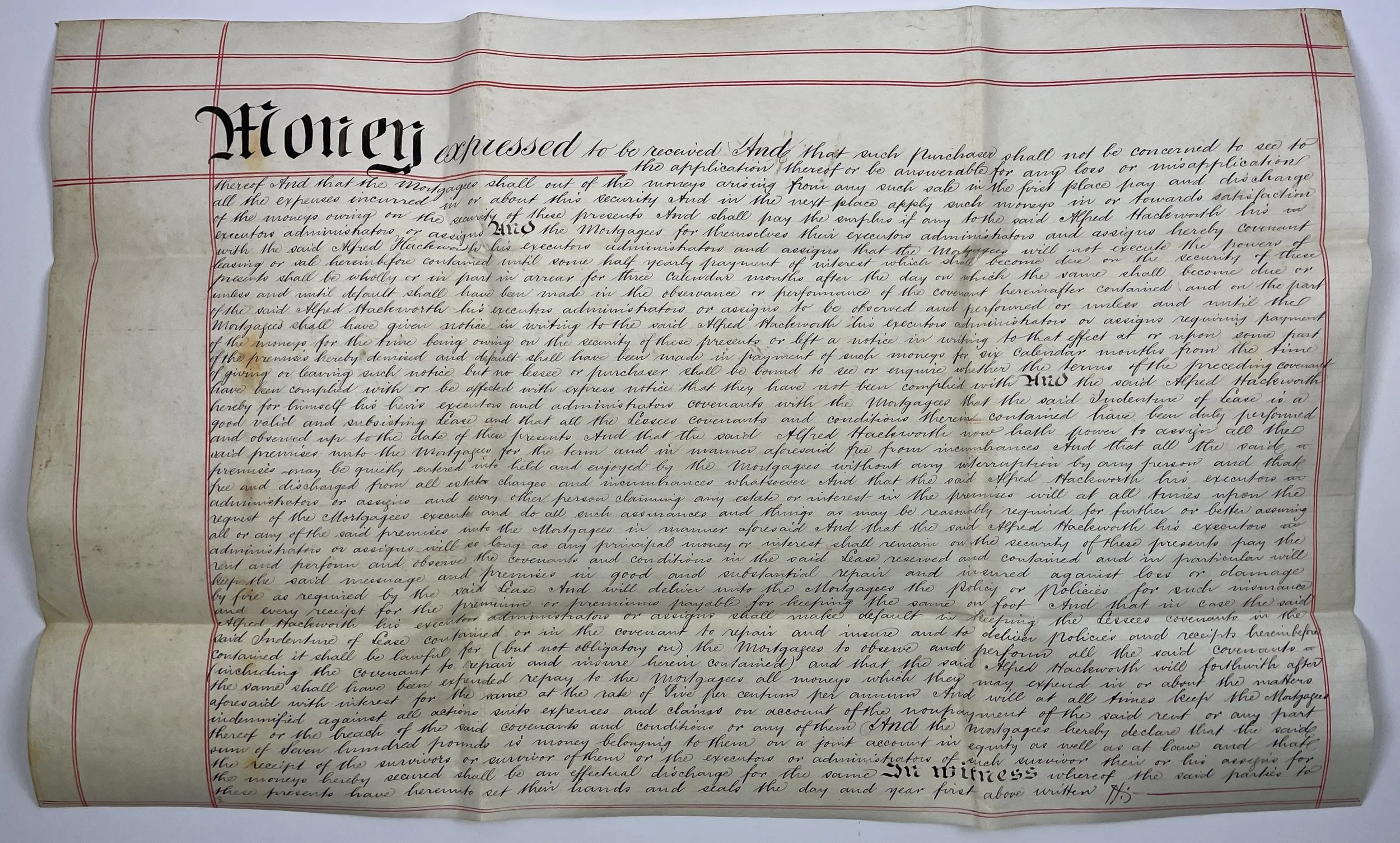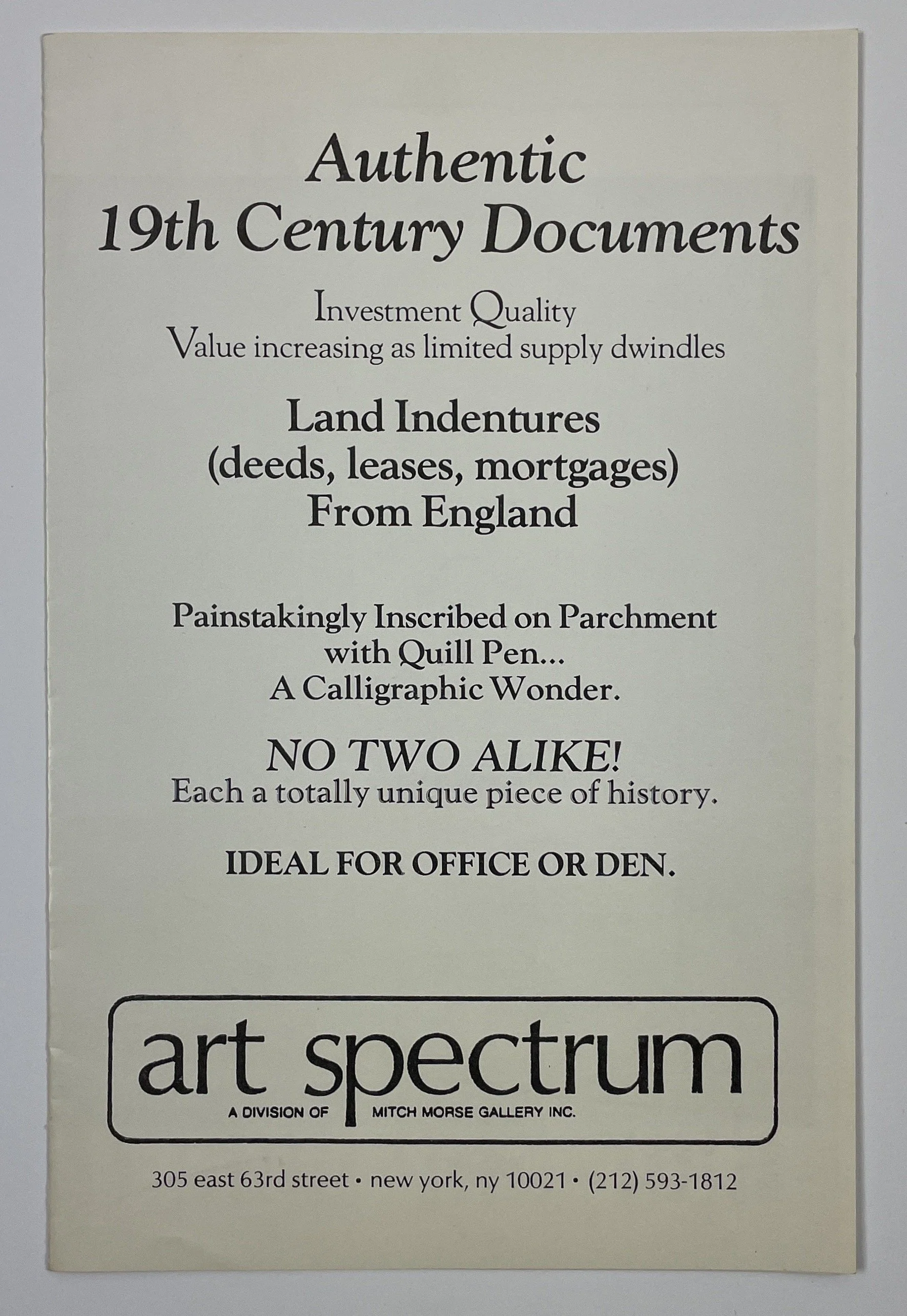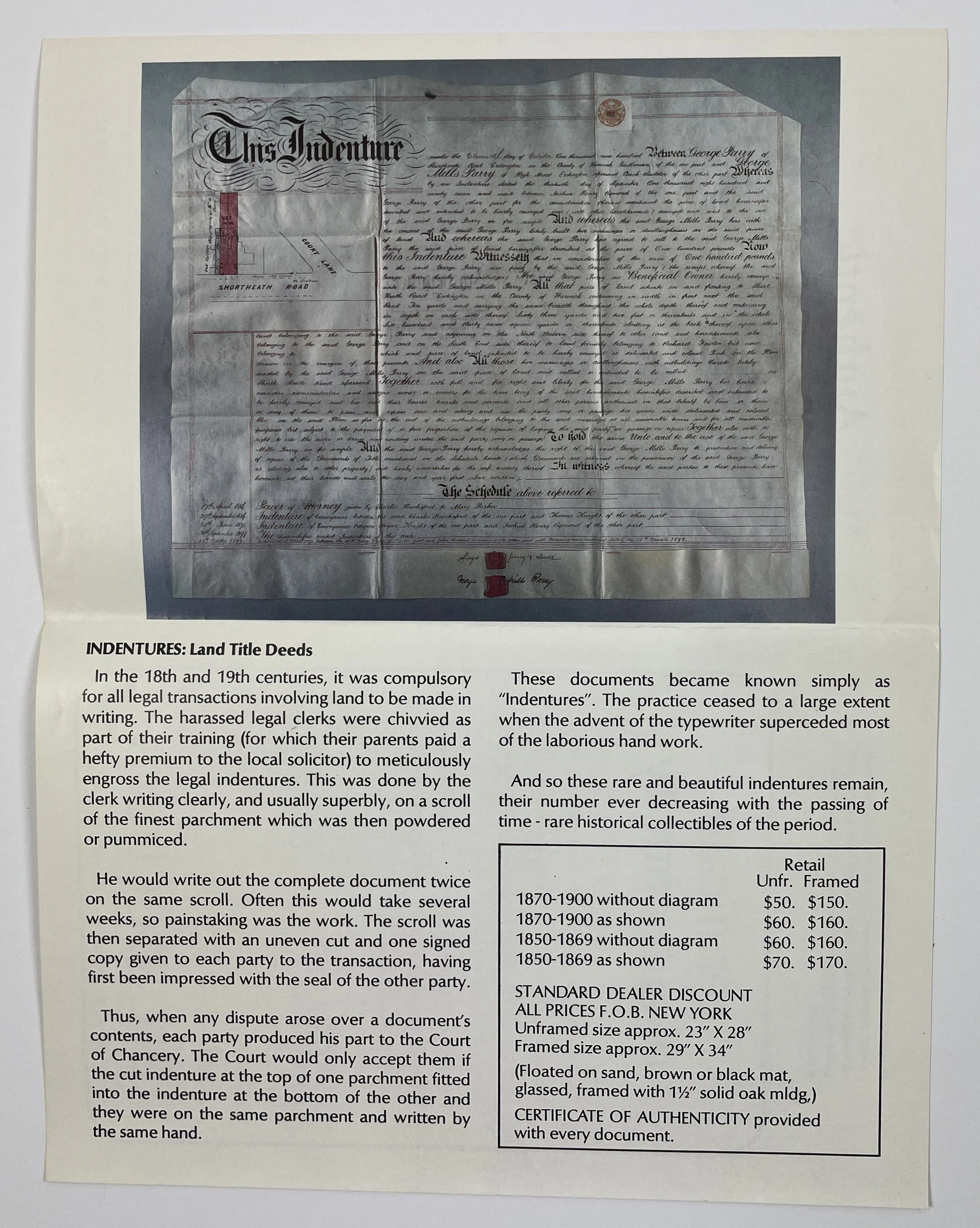“LAND INDENTURES” -
ENGLAND - Authentic 19th Century Documents - Investment Quality
26 x 17
Authentic 19th Century Land Indentures (deeds, leases, mortgages); England. Painstakingly Inscribed on Parchment with Quill Pen - A Calligraphic Wonder - No two Alike! Each a totally uniques piece of history. Of Investment Quality - value increasing as limited supply dwindles. From the retired Mitch Moore Gallery Inc, NYC. Unmatted, never framed or displayed. Image area is in very good frameable vintage condition.
INDENTURES: Land Title Deeds
in the 18th and 19th centuries, it was compulsory for all legal transactions involving land to be made in writing. The harassed legal clerks were chivvied as part of their training (for which their parents paid a hefty premium to the local solicitor) to meticulously engross the legal indentures. This was done by the clerk writing clearly, and usually superbly, on a scroll of the finest parchment which was then powdered or pummiced.
He would write out the complete document twice on the same scroll. Often this would take several weeks, so painstaking was the work. The scroll was then separated with an uneven cut and one signed copy given to each party to the transaction, having first been impressed with the seal of the other party.
Thus, when any dispute arose over a document's contents, each party produced his part to the Court of Chancery. The Court would only accept them if the cut indenture at the top of one parchment fitted into the indenture at the bottom of the other and they were on the same parchment and written by the same hand.
These documents became known simply as "Indentures". The practice ceased to a large extent when the advent of the typewriter superceded most of the laborious hand work.
And so these rare and beautiful indentures remain, their number ever decreasing with the passing of time - rare historical collectibles of the period.
IN - DEN -TURE \ /ɪnˈden.tʃər
a legal document executed in two sections each with an irregular scalloped edge that can later be matched to the other exactly corresponding outline to extablish authenticity.
